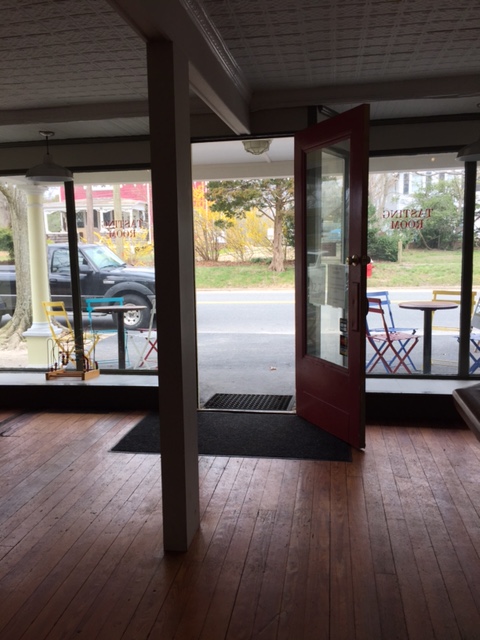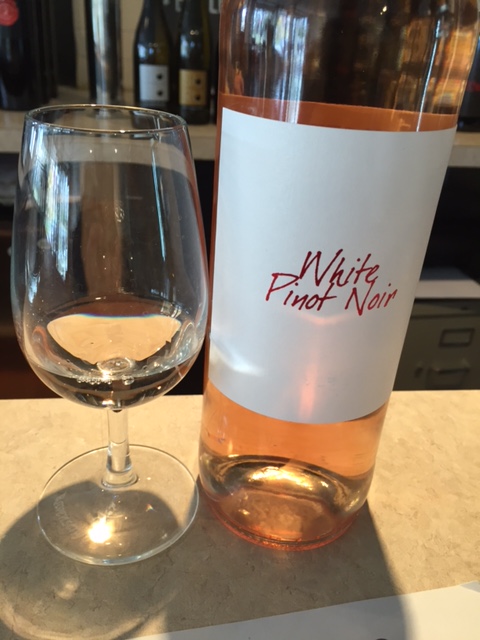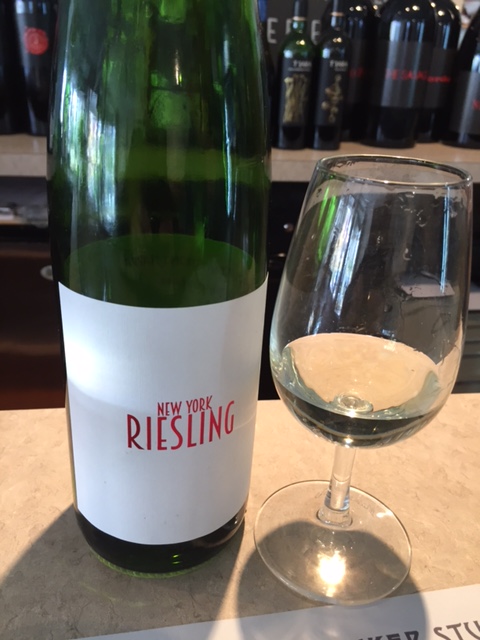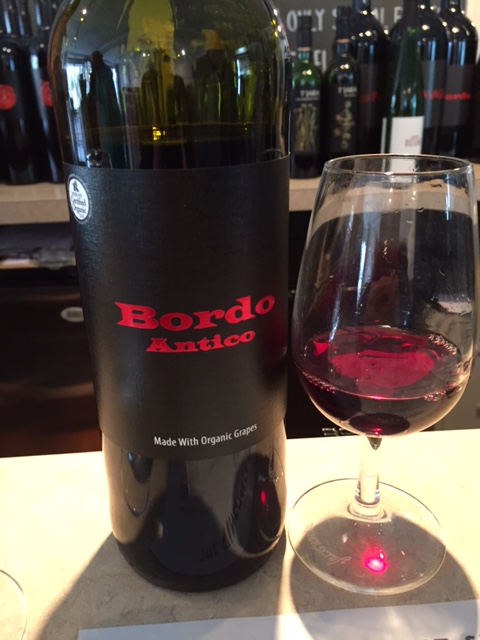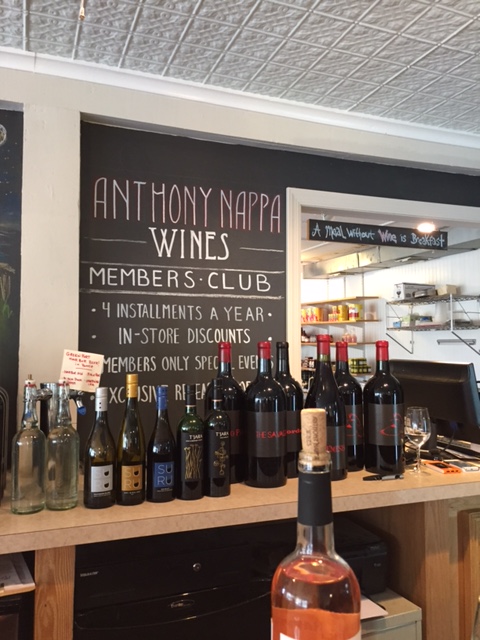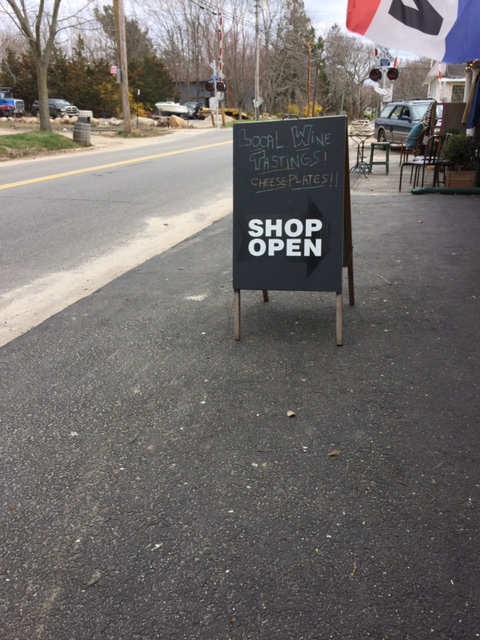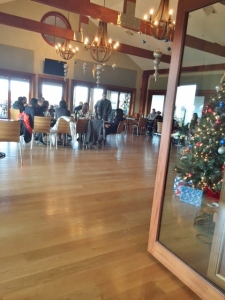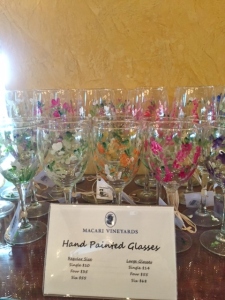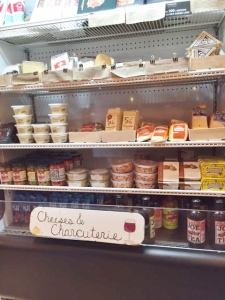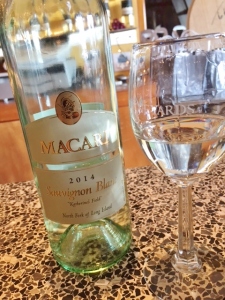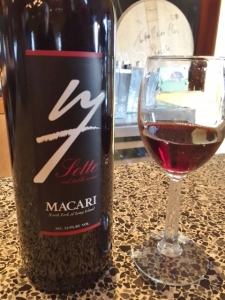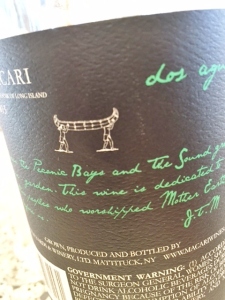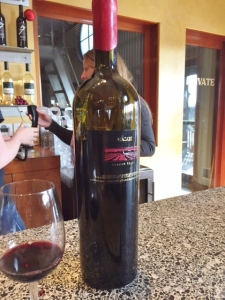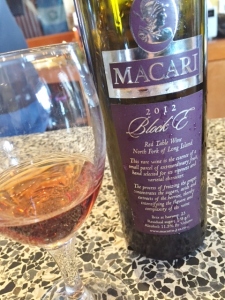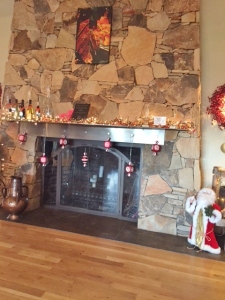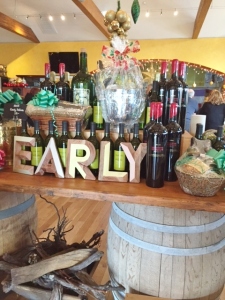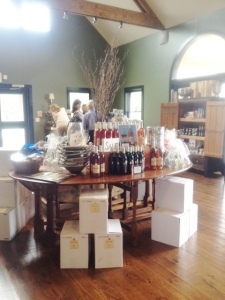
From the outside, the Raphael Winery looks like a villa in Tuscany, with its red-tiled roof and white walls, and the inside is similarly impressive. From spring through fall, and then around Christmas, they are often closed for parties, as they have a big, beautiful facility. At this time of year, they are decorated for Christmas, with lots of twinkling lights and greenery. They also have a pretty nice selection of wine-related gifts.
As we walk up to the circular bar we are greeted by a gentleman who looks familiar. Indeed, he turns out to be the same person who served us the last time we were there, back in February, 2018. We have a nice visit with him, even as he works hard, serving several couples at the bar and a large group of women having a party at two long tables.
The menu offers five options: four sweet wines for $16, four white estate wines for $16, four red estate wines for $16, four premium whites for $20, and four premium reds for $20. Our server describes the premium wines as “heavier,” and when I ask what that means he clarifies that they are “more full-bodied.” They are also pricier, but after some discussion with my tasting buddy we decide to go ahead and share the two premium flights.
There is a menu of snacks, which includes flat breads, and they don’t allow outside food. The pour is generous, and we end up opting not to finish several of the wines. All four glasses of the flight are poured at once, so we could have taken them to a table, but we end up standing at the bar.

- 2017 First Label Sauvignon Blanc $39
This is primarily sauvignon blanc, with 10% semillon, steel fermented. Served too cold, as is often the case. It has a slight citrus aroma, and lots of lemon taste. Also mineral. It is rather tart, and we end up opting not to finish the glass. Needs food, we decide.
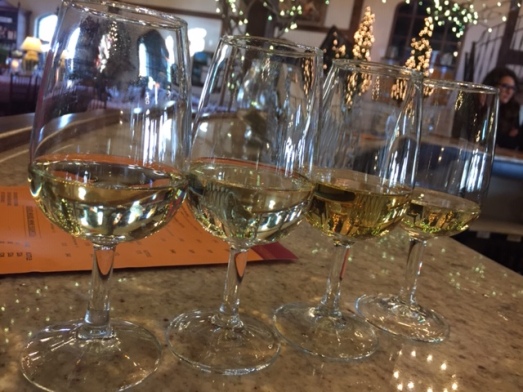
2. 2014 First Label Riesling $39
Our server assures us that this is not a sweet riesling, and indeed, he is correct. He also confides that at first he didn’t care for it, but now that it has aged a bit he likes it better. We don’t. The smell is a bit off-putting, with the chemical/gasoline aroma some rieslings have. It is ultra dry, but not at all fruity to balance the dryness, and a bit of a metallic taste. My husband says it is “monochromatic,” and I agree. Again, we opt not to finish the glass.
3. 2012 White Primo Reserve $39
This is doubly a blend, first of 31% sauvignon blanc, 20% semillon, and 49% riesling, and then aged 50/50 in steel and oak. All that work leads to the white we like the best. Though the aroma still has a trace of that gasoline smell, it also has a pleasantly funky note. As we sip, we note that it combines lemon and butter (from the oak), and I wonder if it would be good to make a sauce for fish with lemon, butter, and a glug of this wine. Could work.
4. 2016 Riesling Port $40
Each of the premium flights ends with a port, in this case a white one with lots of the characteristics of the riesling, but balanced with sweetness. It would be a fine after-dinner sipper. However, we recently took inventory and realized that we have a number of after dinner sweet wines which we should probably try to use one of these days!
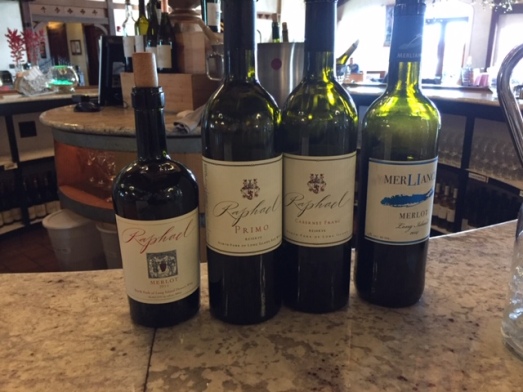
5. 2014 Merliance $72
Now we move on to the reds, which are once again lined up in front of us. “Merliance” refers to a cooperative venture amongst East End wineries–in this case Raphael combined with Wölffer Estates and Macari–to make a blend of the best of their merlots. As usual, it has aromas of cherries and oak, and cherry taste as well. It is dry, with nice tannins, but a bit “thin” (says my tasting pal) for the price.
6. 2015 Cabernet Franc Reserve $72
If not for the price, I might have considered getting a bottle of this, but it seems to me like a good burger wine. It has pleasant forest floor, fruit, and spice aromas, and tastes like purple plums plus nutmeg. Dry, slightly tannic, perhaps it needs to age a bit more.

7. 2015 Primo Reserve $72
This is their Bordeaux blend, of 58% merlot, 17% petit verdot, and 25% cabernet sauvignon, aged in oak. It is good, but, observes my husband, “these prices are a joke.” That may be a bit harsh, but they do seem out of line with the quality of the wines. We have had the good fortune to taste high end Bordeaux, and this does not compete with them. It has a fruity aroma, mostly cherry, and some tannins. The taste is dry, with some fruit. It might be nice with lamb.
8. 2014 Merlot Port $45
Another dessert wine. This smells strangely of olives, I say, and my husband agrees. It is too thin to support the sweetness of the black raspberry taste, with a strangely sharp edge.
Reasons to visit: beautiful room, and they have a pleasant outdoor patio for warm weather; a better than most gift shop; the White Primo Reserve, the Riesling Port, and the Red Primo Reserve; they have good flatbreads (which we had last time we were there); knowledgable and friendly servers.

We saw this sign of the season in the parking lot. Plenty of places to find Christmas trees on the North Fork!












